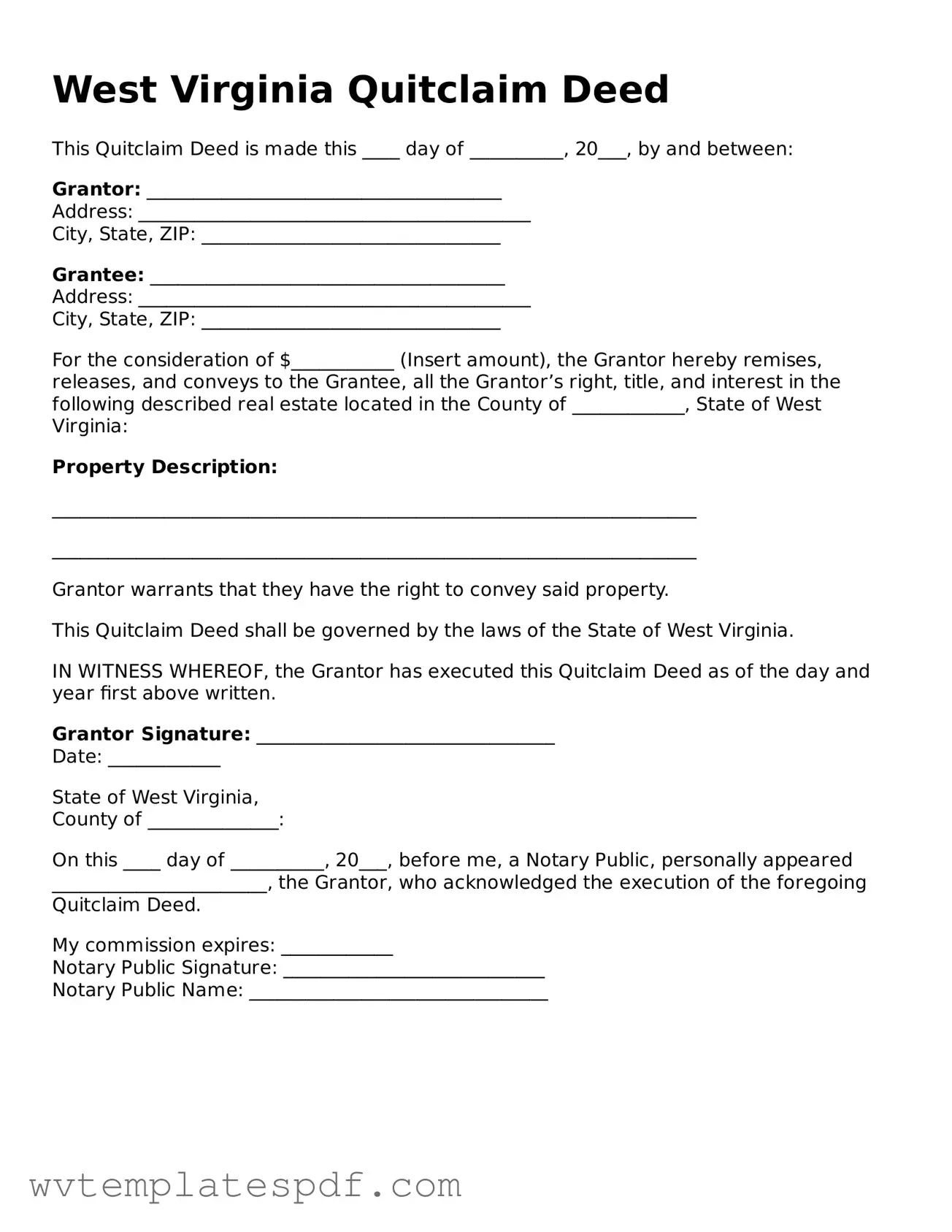When filling out the West Virginia Quitclaim Deed form, individuals often encounter pitfalls that can lead to complications in property transfers. One common mistake is failing to provide accurate legal descriptions of the property. A precise description is crucial; without it, the deed may be deemed invalid. Ensure that the property’s boundaries are clearly defined, as vague descriptions can create disputes later on.
Another frequent error involves the omission of necessary signatures. All parties involved in the transaction must sign the deed. If even one signature is missing, the document may not be recognized by the county clerk. This oversight can delay the transfer process and potentially lead to legal challenges.
People also tend to overlook the requirement for notarization. In West Virginia, a Quitclaim Deed must be notarized to be legally binding. Skipping this step can result in the deed being rejected when presented for recording. It is essential to have a notary public witness the signing of the document to avoid this issue.
Additionally, individuals sometimes fail to include the appropriate consideration amount. While a Quitclaim Deed does not require a large sum, it is important to state the consideration, even if it is nominal. This inclusion helps clarify the intent of the transfer and can prevent misunderstandings.
Another mistake involves not providing the correct information about the grantee. The grantee is the individual or entity receiving the property. Ensure that the name is spelled correctly and that the grantee’s address is included. Incorrect or incomplete information can lead to complications in the future.
Lastly, individuals may neglect to check local recording requirements. Each county in West Virginia may have specific rules regarding the submission of Quitclaim Deeds. Not adhering to these guidelines can result in delays or the rejection of the deed. Always verify local requirements before submitting the form to ensure a smooth transfer process.
